What to do if the nose is damaged by the hump, size or imperfection of the nasal cartilage? Rhinoplasty will help to solve many problems.
What is Rhinoplasty?
Rhinoplasty of the nose is an operation in plastic surgery to correct congenital or acquired deformities, to correct the shape, to restore parts of the nose, aimed at aesthetic improvement in its appearance.
There are several methods for rhinoplasty:
- operative - for minor surgical procedures (for example, correcting the wings or the tip of the nose);
- using injections or a non-surgical method (made to smooth out deformations or imperfections in shapes);
- operations of increased complexity for the complete restoration of the appearance and functions of the nose.
Fundamental surgical intervention involves affecting not only the nasal cartilage, but also the frontal bones, so only an experienced specialist should be trusted so as not to radically disrupt respiratory functions and metabolism. A well-performed rhinoplasty allows a person to look more impressive. A favorable period for correction is considered to be the age from 20 to 30 years.
Methods of plastic nose
Depending on the planned volume of surgical intervention, nose plastic surgery can be open or closed. Open rhinoplasty is considered a serious intervention in bone, cartilaginous, soft tissue, and therefore requires a certain skill from the surgeon.
Typically, this method is used for significant bone changes:
- after hitting;
- with curvatures;
- when installing grafts.
The surgeon makes an incision between the nostrils and separates the skin from the cartilage. The operating field is ready, then there are manipulations to achieve the goal.
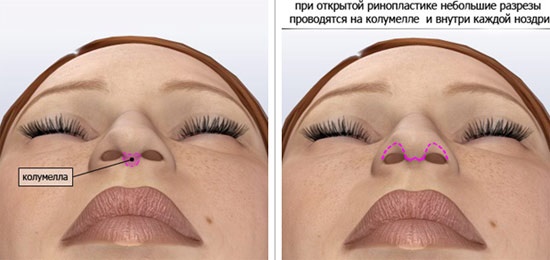
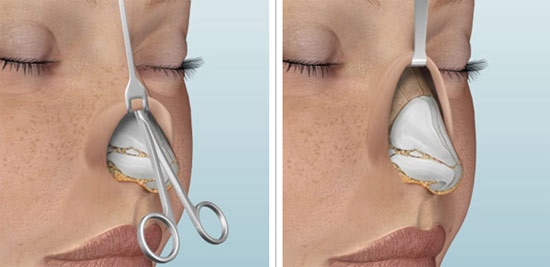
Closed-type rhinoplasty is considered a correction, accompanied by incisions inside the nasal cavity. The skin remains intact. This method is used to eliminate minor defects, as well as to combat hyperemia of the nasal mucosa.
Closed plastic surgery practically does not give swelling and complications, but it can complicate the work of the surgeon due to the inconvenient location of the surgical field.

 Don't miss the most popular column article: Cannula - what is it, how is it used in cosmetology and medicine.
Don't miss the most popular column article: Cannula - what is it, how is it used in cosmetology and medicine.Types of rhinoplasty
Plastic surgery knows several types of nose defects correction. Which option is most suitable for the patient, the doctor decides, based on the needs of the client, the structure of his nose, the quality of cartilage and the amount of surgical intervention.
If the adjustment is minor, then it can be done using injections.Injection rhinoplasty is one of the safest methods to correct the contours of the nose. It can also be performed by an experienced cosmetologist. In this case, injections of fillers (liquid preparations based on hyaluronate) can be used.
The substance fills the cavities, which affect the formation of a more perfect and smooth contour of the nostrils, the back of the nose or its tip. The full procedure is performed once every 1.5-2 years. Another injection method is also used, when hormones are injected under the skin, dissolving formations from fat or connective tissue protruding above the surface.
Reconstructive plastic is aimed at restoring and forming a nose that has defects due to damage, diseases affecting the cartilage tissue, as well as congenital imperfections. Such operations are recommended only after the facial disc and skull are fully formed and stop growing. There are exceptions only for a number of serious indications.
Laser rhinoplasty is a special type of surgery to combat flaws, which allows manipulations in various parts of the nose:
- in the area of the colummela - to change the shape and position of the leathery part between the nostrils;
- on the tip of the nose - correction of the indicated part;
- on the nostrils - adjusting their shape and size;
- transformation of a wide nose into a narrower one;
- removal of a specific part of the nasal mucosa (conchotomy) for more free breathing.
There are concepts of primary and secondary (repeated) rhinoplasty. The latter is applied when it is necessary to correct the consequences that have arisen after the first.
There are several other types of rhinoplasty, but they are used much less frequently for a number of reasons. For example, plastic using Aptos threads. With their help, the wings of the nose and the nose itself are tightened through the punctures. After the procedure, there is a high probability of scars, thread breaks.
Indications for surgery
Rhinoplasty of the nose is done for medical or aesthetic reasons.
Medical indications for surgery include:
- difficulty breathing, arising from an increase in temperature, swelling of the airways due to a curved nasal septum;
- deformation, displacement of the nasal cartilage after injury;
- shortness of breath with congenital disorders of the nasal cavity;
- fractures of the cartilage of the nose;
- collapse of cartilage tissue after certain diseases.
Aesthetic indications are not required for the operation, unless obvious imbalances are striking.
Most often, patients who have:
- wide or narrow nasal bridge;
- dilated or narrowed nostrils;
- nose "potato";
- the consequences of the burn;
- dim nose;
- snub nose;
- noticeable hump;
- hook nose.
Contraindications
Those who decide on rhinoplasty need to know about the existing contraindications, these are:
- acute infectious diseases;
- herpes;
- diabetes;
- suspicion of malignant tumors and the tumors themselves;
- poor blood clotting;
- cardiovascular disease;
- rhinitis in acute form;
- pyelonephritis;
- mental health problems;
- period of pregnancy and lactation;
- period of menstruation;
- children's age, if the condition is not a direct threat to health;
- age after 40-45 years.

 Don't miss the most popular column article: Alentova Vera after plastic surgery - the last photos, what operations were performed, how the star changed.
Don't miss the most popular column article: Alentova Vera after plastic surgery - the last photos, what operations were performed, how the star changed.Pros and cons of surgery
Rhinoplasty of the nose has positive and negative aspects.
The positive ones include:
- the emergence of confidence in their appearance, satisfaction from it;
- getting rid of defects;
- getting rid of snoring;
- getting rid of shortness of breath.
But it is necessary to understand that the operation can lead to undesirable phenomena:
- spontaneous bleeding;
- decreased sense of smell;
- postoperative complications;
- infection;
- lack of the expected effect.
Plastic nose tip
The modeling of the tip of the nose can be carried out either by the closed method or by the open method. It all depends on the purpose of the operation. As a rule, patients turn to the surgeon if it is necessary to raise the tip of the nose, slightly lower it, straighten it or make it more graceful.
In the open method, after cutting the skin between the nostrils, the surgeon removes by peeling off the excess subcutaneous soft tissue or part of the cartilage. When manipulating cartilaginous tissue, it is necessary to take into account its condition and the degree of cutting off the excess so that the support function of the nose is not lost.
Another method of correction involves not cutting, but building up by using a biotransplant - usually for the formation of slight elongation or snub-nosedness.
With the closed method, the surgeon cuts the mucous layer and creates a shape, freeing the wing-shaped cartilage and applying small (3-5 mm) sutures in the right places. The disadvantage is that the doctor does not see exactly where the blood vessels pass and can touch them.
Plastic surgery of the wings of the nose
With the help of plastic surgery of the wings of the nose, they eliminate:
- asymmetry of the nostrils - the formation of a new contour by the method chosen by the surgeon;
- dilated nostrils - narrowing occurs due to stitching of the wing-shaped cartilage in the columella;
- sinking of the nostrils - the effect is achieved by transplanting tissue from the auricle or nasal septum;
- adjust the length and width of the lateral parts of the nostrils - methods of internal excision, tissue tightening are used;
- large size of the wings of the nose - reduction occurs due to partial excision of the tissue.
To carry out these types of plastics, the closed method of surgery under local anesthesia is most often used.
Septoplasty
Septoplasty aims to correct defects in the nasal septum, for example, displacement of cartilage or nasal bones, which interferes with normal breathing, provoking chronic diseases up to bronchitis, hypoxia and asthma. The operation is performed under general anesthesia and using an open method.
Medicine knows several ways to perform septoplasty:
- The main method is submucosal resection, in which the surgeon removes the deformed parts of the cartilage or bone, having previously freed them from soft tissues.
- Partial septoplasty involves removing a small portion of the cartilage. Another option is to remove the deformed fragment, align it by, for example, excision and return it back, taking into account the anatomically correct position.
- The endoscopic method is also used, that is, all actions can be traced using optical equipment.
In many cases, the operation is carried out using a laser rather than a scalpel.
Rinoseptoplasty
Indications for rhinoseptoplasty may include:
- desire to correct the shape of the nose;
- correction of a deformed nasal septum;
- neoplasms;
- congenital defects of the nose;
- consequences of trauma
- repeated operations.
Medicine identifies the types of rhinoseptoplasty:
- functional (solves problems of nasal dysfunctions);
- reconstructive (when restoring the shape of the nose after injuries);
- aesthetic (correction of various parts of the nose).
Operations can be performed under general anesthesia and local anesthesia, open or closed method. The surgeon chooses the methods of plastic surgery, focusing on the nature of the manipulations.
Reconstruction of the external nose
The operation to restore the external nose is considered one of the most difficult, requiring a lot of surgical experience.
The indications for the restoration of the organ of smell are as follows:
- significant damage to the nose as a result of injury;
- congenital anomalies;
- deformities after removal of growths and tumors;
- the result of frostbite, burns;
- other causes of destruction of the nasal frame.
Reconstruction is usually performed using the patient's own biomaterial:
- forehead, temple skin;
- part of the cartilage from the auricle;
- part of the bone from the rib.
This gives a certain guarantee that the transplanted element will not undergo rejection. If it is impossible to use the patient's material, a specially prepared silicone implant is made. Surgical actions are designed to restore all layers, from the mucous membrane to the nasal frame itself.
Which method to use: closed or open - the doctor decides, focusing on the task, but in both cases, general anesthesia is preferable. Reconstruction can last from 1 to several hours. Rehabilitation takes no more than 2 weeks.
Removal of the hump of the nose
It is recommended to remove the hump not earlier than 18 years of age. In the process of plastic surgery, a small incision is made on the back of the nose, and the cartilaginous or bone tissue protruding above the surface is removed with a special file.
At the discretion of the doctor, incisions on the sides of the nasal slope are possible to give the nose a more aesthetic appearance. At the end of the procedure, the incisions are tightened, sutures are formed, a plaster cast is applied for 2-4 days. The procedure takes place under local or general anesthesia, depending on the complexity of the execution and always using an open method.
Closed rhinoplasty
This method includes a large number of surgical procedures and can significantly complicate the work of the surgeon, since the procedure is performed exclusively inside the nasal cavity.
The advantages of this rhinoplasty are that it takes less time than open, the skin on the nose remains intact, and the postoperative period passes without significant swelling.
However, as after any surgical intervention, typical complications are possible:
- infection;
- bleeding;
- internal hematomas;
- unexpected mucosal reactions.
Indications for such an operation may be medical and aesthetic reasons:
- obstructed passage of air through the nose;
- injury;
- ugly nose;
- deformation of some part of the organ.
Revision rhinoplasty, rhinoseptoplasty
Secondary or revision rhinoplasty is performed if the first operation was unsuccessful and there were certain complications or dissatisfaction with the appearance.
Reoperation to correct the results of the previous procedure is possible only after 1 year, after the nose is finally formed and it will be clearly seen what needs to be corrected. Such a plastic is performed using an open method and is associated with significant surgical intervention.
To make the correct diagnosis and choose the method of performing the operation, the surgeon should familiarize himself with the photographs of the nose before and after the first operation, and also offer the patient to do a tomography. It is necessary to be prepared for the fact that the rehabilitation period will be much longer than the first time.

 Don't miss the most popular column article: How and why ribs are removed - efficiency, photos before and after surgery.
Don't miss the most popular column article: How and why ribs are removed - efficiency, photos before and after surgery.Preparing for surgery
Rhinoplasty of the nose requires preliminary preparation. The surgeon examines the patient's health, the state of the future operating field, discusses the client's wishes and analyzes the most appropriate correction methods. The patient needs to be examined for cardiovascular diseases, consult a neurologist, otolaryngologist.
If plastic surgery is not contraindicated to the patient, then he is offered a day hospital for 10-14 days.
During this period, it is necessary to refuse:
- alcoholic beverages;
- heavy, fatty foods;
- smoking,
It is necessary to observe the regime of proper nutrition and adequate sleep. It is not recommended to drink water and eat food 2-3 hours before the start of the operation - this may affect the result of the surgery.
Small defects, changes in the configuration of the tip of the nose are done under local anesthesia. If serious changes and adjustments are required, then general anesthesia is prescribed. In this case, the patient needs to consult an anesthesiologist regarding the tolerability of the anesthesia components.
Required analyzes
Before the operation, it is necessary to undergo a series of tests.
To do this, appoint:
- general blood analysis;
- ECG;
- biochemical analysis;
- additional tests on the recommendation of a therapist.
The examination is carried out to understand the general condition of the patient, to determine the rate of blood clotting, the presence of hidden inflammatory processes in the body and their pathogens.
Start of surgery and anesthesia
Any surgical action, including plastic nose surgery, begins with the treatment of the operating field with disinfectants. This will reduce the risk of pathogens entering the skin.
Before surgical manipulations, the anesthesiologist gives the patient local anesthesia (if a minor correction is planned) or gives general anesthesia (in complex cases involving cartilage, bone tissue).
As a rule, the operation, if it is open, begins with a scalpel incision of the skin between the nostrils and removal of the cartilage from it. Then there are actions aimed at completing the task. Closed plastic surgery involves the surgeon working through the nostrils, without compromising the integrity of the skin.
In some cases, additional anesthesia is given to locally disable receptors under general anesthesia.
Stages of rhinoplasty
Rhinoplasty consists of several stages:
- disinfection of the skin at the site of incisions;
- anesthesia;
- if necessary, additional local anesthesia to disable receptors;
- an incision is made, depending on which method will be used closed (in the nasal part) or open (between the nostrils);
- correction of a defect, irregularities - depending on the task;
- replacement of cartilage with implants, if required;
- stitching of surface tissues;
After the operation, the incisions in the nose are closed with self-absorbable sutures. Strips are glued to the outside of the skin. - application of a bandage fixer.
Rehabilitation after surgery: before and after photos
Rhinoplasty of the nose takes from 40 minutes. up to 4 hours. The rehabilitation time takes from 14 to 30 days, depending on the complexity and volume of the surgical intervention.
After the plastic surgery, swelling and hematomas are observed, which are formed due to damaged or burst capillaries. It will take 7-10 days for the nose to take the given shape, and the stitches to heal, during which it is necessary to wear a fixation bandage.
At first, it is recommended to insert cotton or gauze swabs to stop bleeding in the nostrils. For an operation affecting all nasal parts, the recovery period is determined at 14-16 days.
To prevent intense blood circulation in the face and expansion of capillaries, doctors recommend avoiding sauna or hot baths for 25-30 days, any physical activity that provokes facial muscle tension.
Throughout the entire recovery period, it is recommended to wash in such a way that the nose remains dry, to wear clothes that do not need to be worn over the head. The final result can be assessed no earlier than 6 months later.
Consequences, complications of rhinoplasty
Depending on the quality of the operation performed and the individuality of the organism, a number of consequences may occur locally:
- decreased skin sensitivity;
- scarring;
- labored breathing;
- complete or partial loss of smell;
- skin defects - stretch marks, loss of elasticity;
- tissue necrosis;
- dark spots;
- lack of the desired effect.
Complications after rhinoplasty are conventionally divided into early and unpredictable. The latter can arise unexpectedly due to a specific reaction of the body and affect the state of cartilage or healing tissues.
Early complications include:
- involuntary lacrimation;
- bleeding;
- severe swelling;
- pronounced hematomas;
- the formation of plugs of the sebaceous glands.
Nutrition after surgery
To prevent edema, experts recommend limiting salt and sugar intake for 1.5-2 months after surgery. It is not advisable to eat monosodium glutamate and other food chemicals. For the period of the first 14-16 days, doctors suggest changing the meal schedule - eating 5-6 times a day in small portions. It is believed that this will help better absorption of nutrients.
As for the menu itself, in order to prevent an intense rush of blood to the head and vasodilatation, it is necessary to give up alcohol, the use of hot and spicy foods for a while.

Excluded from the diet:
- fatty;
- spicy;
- food that can cause constipation.
Daily meals should consist of:
- porridge;
- soups;
- fruit;
- vegetables;
- lean meat, poultry, fish, stewed or steamed.
As for the drinking regime, they drink water, tea, juices based on the needs of the body, but under control, not forgetting about the possibility of edema.
Rhinoplasty prices in Moscow, St. Petersburg and regions
The cost of rhinoplasty includes:
- anesthesia;
- the operation itself, taking into account the level of its complexity;
- expendable materials;
- being in a hospital, taking into account its status;
- postoperative medical consultations.
The table shows approximate prices for several main types of rhinoplasty in various cities of Russia.
| Moscow | SPB | Rostov-on-Don | Novosibirsk | |
| Full | 170000 | 100000 | 150000 | 70000 |
| Rinoseptoplasty | 230000 | 100000 | 100000 | 100000 |
| Tip | 130000 | 80000 | 50000 | 60000 |
| Wings | 160000 | 50000 | 50000 | 50000 |
| Repeated | 300000 | 150000 | 250000 | 200000 |
Now it is difficult to surprise with rhinoplasty of the nose. People resort to it to solve their problems, both for medical reasons and following the standards of beauty. It is not recommended to neglect the preliminary consultations of specialists, the choice of an experienced surgeon and postoperative rules.
Video about rhinoplasty of the nose, real stories
All about rehabilitation after rhinoplasty of the nose:
https://www.youtube.com/watch?v=4714Dmh5xmQ
The real story of a girl who underwent nose rhinoplasty:

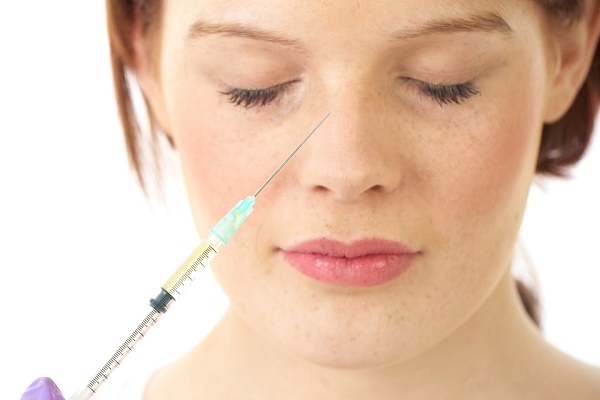
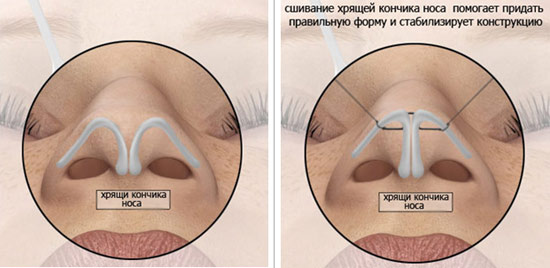
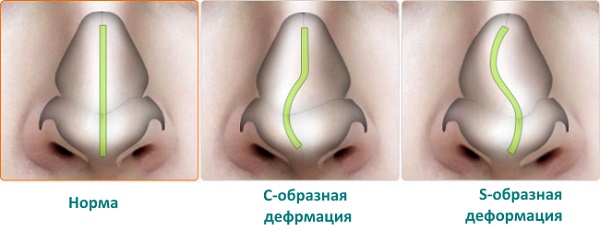
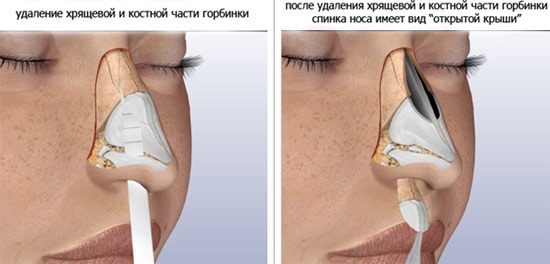
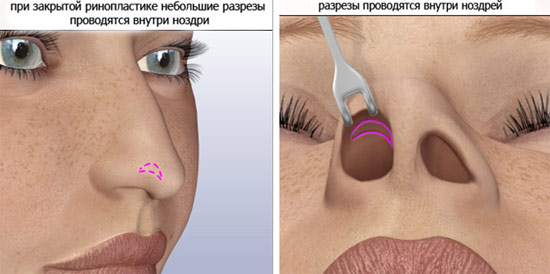
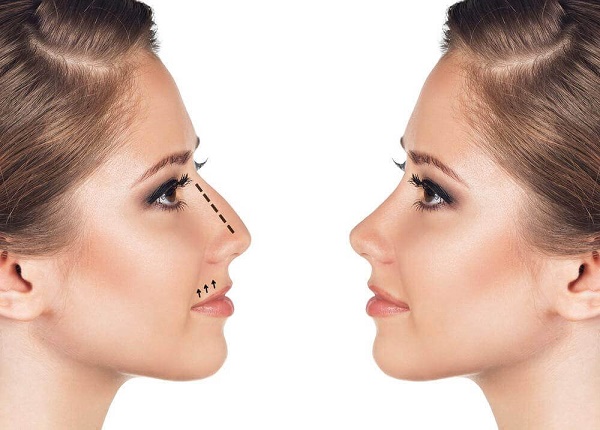
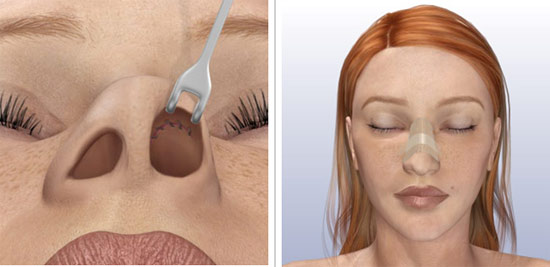
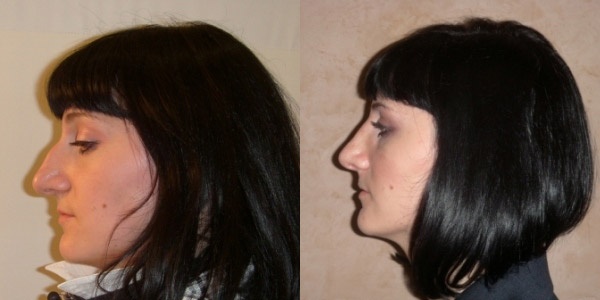
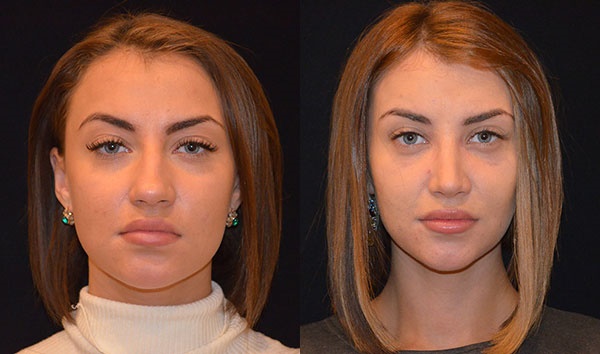
I didn't even know that the nose can be changed with injections. I'm unlikely to decide on plastic, but I'll think about the injections.